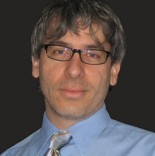About 400,000 people suffer from retinitis pigmentosa, a disease that causes blindness.
Thanks to the innovative work of Dr. Robert Greenberg, 200 people with the disease can now see colors, shadows and light after successfully receiving a "bionic eye" implant.
Now, Dr. Greenberg wants to help the six million people worldwide who are blind due to other health issues, such as cancer, glaucoma and diabetes.
He chats with Dr. Roizen about the newest technology he's developing that bypasses the eye altogether and works directly with the brain. This means people with damaged eyes may be able to regain their sight.
Plus, the technology could possibly help those with other impaired senses, like hearing, taste, smell or touch.
Thanks to the innovative work of Dr. Robert Greenberg, 200 people with the disease can now see colors, shadows and light after successfully receiving a "bionic eye" implant.
Now, Dr. Greenberg wants to help the six million people worldwide who are blind due to other health issues, such as cancer, glaucoma and diabetes.
He chats with Dr. Roizen about the newest technology he's developing that bypasses the eye altogether and works directly with the brain. This means people with damaged eyes may be able to regain their sight.
Plus, the technology could possibly help those with other impaired senses, like hearing, taste, smell or touch.

 Robert Greenberg, MD, PhD, is the Chairman of the Board and founder, Second Sight Medical Products, Inc.
Robert Greenberg, MD, PhD, is the Chairman of the Board and founder, Second Sight Medical Products, Inc.